New York Rangers: Five improvements made since last season

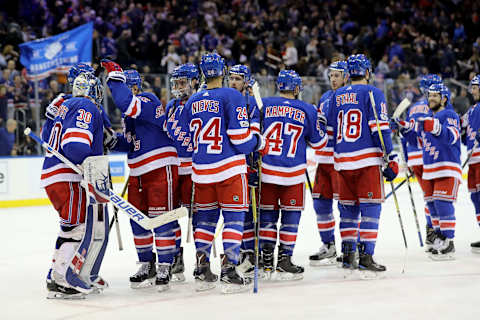
The 2017-18 New York Rangers are still a work in progress. However, this year’s team has made several improvements since last season. This is a look at five of those upgrades.
When the season began expectations were sky high for this New York Rangers roster. A slow start and questionable decision-making tapered those predictions, but only slightly. Now, following an NHL-best six game win-streak, glimpses of what this team is made of are peering through.
It’s not always fair to make comparisons from season to season with the number of roster changes that are likely to occur. Nonetheless, there are obvious differences between this season’s team is meshing compared to last. Moreover, there are also a number of areas that this year’s roster has grown and succeeded where last year’s team had shortcomings.
The jury is still out about whether the 2017-18 Rangers have what it takes to be true Stanley Cup contenders. However, these five changes will certainly aid them on their path against the rest of the NHL’s top competition.
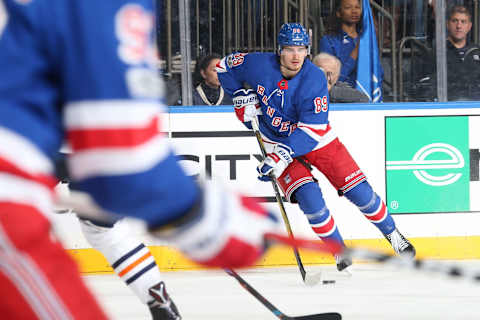
Pavel Buchnevich
I felt as though giving everyone’s favorite Russian son a discussion of his own. The emergence of Pavel Buchnevich has been one of the best storylines of the young season. His production so far is just a glimpse of what we all knew he was capable of during his rookie season.
By no fault of his own, Buchnevich was a consistent member of Alain Vigneault’s doghouse for the 2016-17 season. The Rangers head coach did his best to continue that trend during the early going this year. However, the 22-year old Russian has made it nearly impossible to bury him on the forward depth chart.
Through 19 games this season, Buchnevich has recorded 16 points (eight goals and eight assists). Buchnevich has also contributed a four-game goal streak to help spurn the Rangers during their six-game winning streak. At this pace, the soon to be elite winger could eclipse not just 20, but perhaps the 30 goal mark for the first time in his short career.
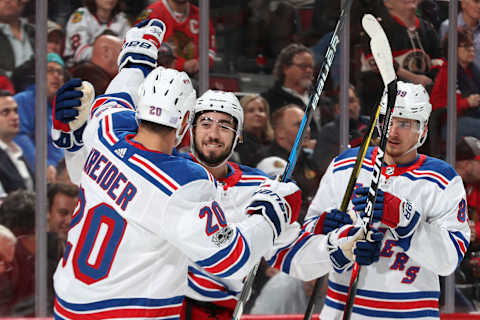
A true first line
This improvement is not meant to be a shot taken on last year’s roster. Generally speaking, the Rangers frequently deployed their first two lines as 1A and 1B. However, this season has been much different with the absence of Derek Stepan.
Now, Alain Vigneault and his staff have one line, and center, that stick out most when thinking of their primary option. That line consists of Mika Zibanejad, Chris Kreider, and the aforementioned Pavel Buchnevich. Of course, in a very Vigneault manner, he has separated this group at times, just to come to the realization that they are easily the best trio of forwards on the roster.
Mika Zibanejad has a clean slate of health, giving him the honors of being a first-line center for the first time in his young career. It is no surprise that the emergence of Pavel Buchnevich has coincided with increased ice-time. Surprisingly, Chris Kreider is often the forgotten member of this elite trio as the elder statesmen.
As the season progresses, it will be this group that makes the biggest impact on the team’s success.
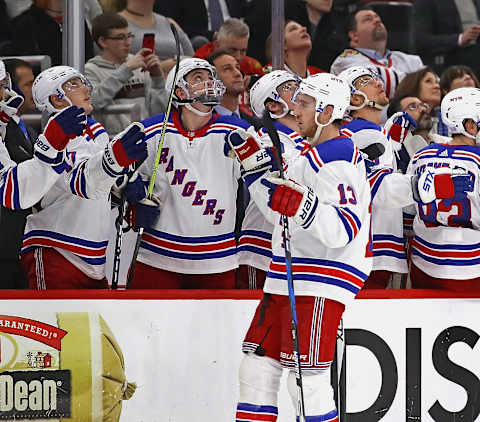
Expected goals for
Getting a little more in-depth with the Rangers’ stats, something that stood out was the team’s expected goals for. Fans and teams are able to access an increasing number of analytical information. This is all thanks to the helpful contributions by many within the hockey community.
Last season, the Rangers were among the worst in the league in the expected goals for per 60 minutes played. Their season-long projections had them generating 2.36 goals per 60 minutes of play. However, with a little bit of puck luck, they were able to generate slightly more than that figure. By season’s end, the 2016-17 roster’s goals for per 60 minutes was 2.51.
Fast forward to this season, and the roles are reversed between expectations and reality. Thus far into the season, the team is projecting a nightly 2.71 goals per 60 minutes. On the other end of things, the Rangers are only averaging 2.38 goals for in the same amount of time.
As seen during the recent winning streak, when this team scores they do so in bunches. Hopefully, as the season progresses their actual goal generation can live up to rising expected goals for.
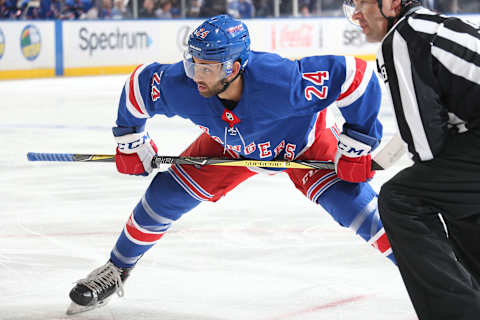
Face-offs
An increased face-off winning percentage was not supposed to happen with the Rangers losing their best man at the dot. The departure of Derek Stepan meant an increased responsibility for Mika Zibanejad, Kevin Hayes, and whoever ended up filling the third and fourth centers slots. Lucky for the Rangers, several players have picked up the slack.
First and foremost, the team’s new number one center continues to play above his career averages. Since joining the Rangers last season, Zibanejad has won 51.8% of his faceoffs taken. That is a marked improvement from his time in Ottawa, where he won just over 47% of his draws in five seasons.
Similarly, Kevin Hayes has upped his percentages somewhat significantly. This season he is winning 48.7% of his face-offs, which is almost 3% higher than last season and nearly 7% higher than his career average.
Where the Rangers have seen the biggest upgrade at the face-off dot has been among the secondary options. Both David Desharnais (58.7%) and Cristoval Nieves (50.8%) are winning more than half of their draws.
With the number of set plays that this team likes to run, it’s important to see them developing trends in the right direction.
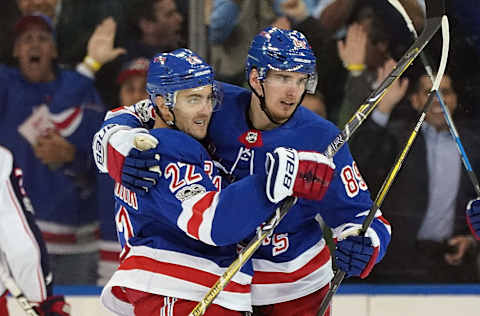
Power play
It’s not just about the amount of power play goals the Rangers are scoring. So far into the 2017-18 season, the quality of product while playing with a man advantage has been outstanding. For the first time in years, the Rangers are a true threat when their opponent takes a penalty.
There is plenty of obvious reasons why the team is succeeding so much more than last season playing up a man. Obviously, the addition of Kevin Shattenkirk has been the most prominent change to the unit that often looked passive and stoic last season. The Rangers have their first true power play quarterback since Brad Richards, and even he was fading towards the end of his tenure in New York.
Furthermore, a strong start from a healthy Mika Zibanejad has made a world of difference. He has a booming shot from the left side of the goaltender, something that Derek Stepan did not have in his arsenal. Zibanejad’s shooting threat has also made it easy for players such as Pavel Buchnevich with defenses favoring the opposite side of the ice.
Next: New York Rangers: Should we worry about Ryan McDonagh?
While the increase from last season’s numbers may seem minimal (20.26% vs. 24.64%), their conversion rate seems much more sustainable. In fact, I would not be surprised to see their third-ranked power play group continue to get better with supplemental scoring from the second unit. The addition of another shooting option could help bolster the second unit, as well.